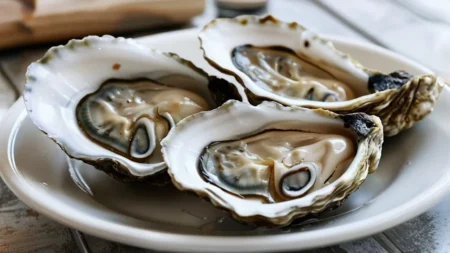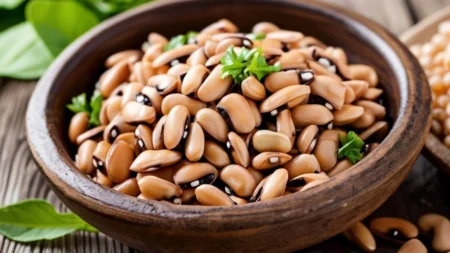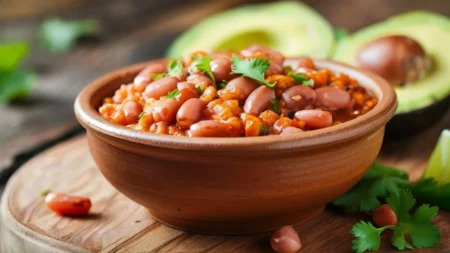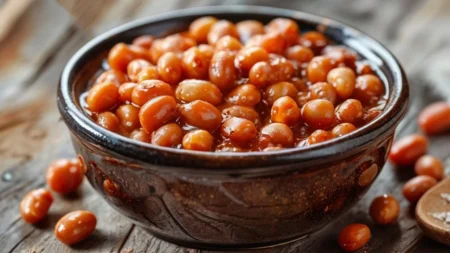Are Pork Rinds Good for Weight Loss?
Key Takeaways
- Pork rinds are low in carbohydrates and high in protein, making them a popular snack for those following low-carb diets.
- They are calorie-dense but can be part of a weight-loss plan when consumed in moderation.
- Pork rinds are high in fat, which can promote satiety and help reduce overall calorie intake.
- It’s important to consider portion sizes and the overall nutritional context of your diet when including pork rinds.

What Are Pork Rinds?
Pork rinds, also known as chicharrones, are crispy snacks made from the skin of pigs. They are typically fried or roasted until they become crunchy and are often seasoned with various spices. Pork rinds have gained popularity in recent years, particularly among those following low-carb or ketogenic diets, due to their high protein content and low carbohydrate levels.
Nutritional Profile of Pork Rinds
Below is the average nutritional content per 1-ounce (approximately 28 grams) serving of pork rinds:
| Nutrient | Amount |
|---|---|
| Calories | 160 |
| Protein | 9 grams |
| Carbohydrates | 0 grams |
| Dietary Fiber | 0 grams |
| Sugars | 0 grams |
| Fat | 9 grams |
| Sodium | 600 mg |
Key Nutritional Components
- Protein: Pork rinds are a source of protein, which is essential for muscle maintenance and can help promote feelings of fullness.
- Fat: The primary macronutrient in pork rinds, fat can provide satiety and be an energy source, especially in low-carb diets.
- Sodium: Pork rinds can be high in sodium, which is important to monitor for those concerned about blood pressure and overall heart health.
How Pork Rinds Can Aid in Weight Loss
1. Low in Carbohydrates
Pork rinds contain virtually no carbohydrates, making them an attractive snack option for individuals following low-carb or ketogenic diets. Reducing carbohydrate intake can lead to weight loss by promoting fat burning and reducing hunger.
2. High in Protein
With 9 grams of protein per serving, pork rinds can help increase feelings of fullness, potentially reducing overall calorie consumption. Research has shown that higher protein diets can aid in weight management by curbing appetite.
3. Caloric Density
Pork rinds are calorie-dense, meaning they provide a significant number of calories in a relatively small volume. This can be beneficial when portion control is exercised, allowing individuals to feel satisfied without overindulging.
4. Satiety from Fat
The fat content in pork rinds contributes to feelings of fullness, which can help prevent snacking on higher-calorie options later in the day. Studies indicate that diets higher in healthy fats can enhance satiety and promote weight loss.
Considerations When Consuming Pork Rinds
1. Portion Control
Due to their calorie density, it’s essential to practice portion control when eating pork rinds. A single serving can quickly add up in calories, so it’s important to measure out portions rather than eating directly from the bag.
2. Sodium Content
Pork rinds can be high in sodium, which may contribute to increased blood pressure and water retention in some individuals. Opting for lower-sodium varieties can help mitigate this concern.
3. Overall Nutritional Balance
While pork rinds can fit into a weight-loss diet, they should not replace nutrient-dense foods like fruits, vegetables, and whole grains. It’s important to maintain a balanced diet to ensure you receive all essential nutrients.
Healthy Ways to Incorporate Pork Rinds into Your Diet
Pork rinds can be enjoyed in various ways beyond just snacking:
- Toppings: Crush pork rinds and use them as a crunchy topping for salads or casseroles for added texture and flavor.
- Breading: Use crushed pork rinds as a breading substitute for chicken or fish, providing a crispy coating without the carbs from traditional breadcrumbs.
- Snack Pairing: Pair pork rinds with guacamole or salsa for a satisfying low-carb snack that offers healthy fats and fiber.
- Soups and Stews: Add pork rinds to soups or stews as a thickener and to enhance flavor while keeping the dish low-carb.
Conclusion
Pork rinds can be a suitable option for those looking to lose weight, particularly for individuals following low-carb or ketogenic diets. Their high protein content and low carbohydrate levels make them a filling snack when consumed in moderation. However, it is crucial to monitor portion sizes and consider the overall nutritional context of your diet to maintain a healthy balance. By incorporating pork rinds wisely, they can complement a weight-loss plan while still providing enjoyment.
FAQ
1. Are pork rinds good for weight loss?
Yes, pork rinds are low in carbohydrates and high in protein, which can help promote feelings of fullness and fit into a weight-loss diet.
2. How many calories are in pork rinds?
There are approximately 160 calories in a 1-ounce serving of pork rinds.
3. Are pork rinds healthy?
Pork rinds can be part of a healthy diet when consumed in moderation, but they are high in fat and sodium, so it’s important to monitor portion sizes.
4. How can I incorporate pork rinds into my meals?
Pork rinds can be used as toppings, breading substitutes, or paired with dips for a low-carb snack.
5. Can I eat pork rinds on a low-carb diet?
Yes, pork rinds are an excellent snack choice for low-carb diets due to their high protein and low carbohydrate content.










